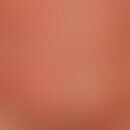Synonym(s)
DefinitionThis section has been translated automatically.
Red dye obtained from the dyer's bush. Henna is used to dye hair, skin and nails. Its use as a hair dye or as a body dye (temporary tattoos) began long before the Christian era.
General informationThis section has been translated automatically.
Today, the pulverized leaves are applied to the hair, sometimes with paraphenylenediamine (PPD) or in combination with other substances. The colour ranges from red-gold-blond to black.
The essential compound is Lawson, 2-hydroxy-1,4-naphthoquinone, a red, antibiotically active naphthoquinone dye. Lawson is present in the fresh plant as a glycosidic compound (hennoside).
It is also used in animal feed, for colouring articles of daily use, as a food colouring and fragrance.
On wool henna dyes orange-brown without mordanting.
For hair dyeing, henna is mixed with lime and water and applied hot to the hair (thus permanent dyeing).
You might also be interested in
Complication(s)This section has been translated automatically.
NaturopathyThis section has been translated automatically.
LiteratureThis section has been translated automatically.
Almeida PJ et al (2012) Quantification of p-phenylenediamine and 2-hydroxy-1,4-naphthoquinone in henna tattoos. Contact dermatitis 66:33-37.
Boschnakow A et al. (2003) Temporary tattooing with henna induces contact allergy to textile dyes. JDDG 1: 962-964
- Davies EE et al (2007) Para-phenylenediamine allergy from a henna tattoo. Arch Dis Child 92: 243
Jovanovic DL et al.(2009) Allergic contact dermatitis fromtemporary henna tattoo. J Dermatol 36:63-65.
- Polat M et al. (2009) Allergic contact dermatitis to pure henna. Dermatol Online J 15:15.




